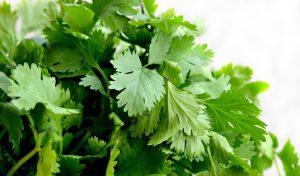Coriander (aka cilantro / Chinese parsley, Coriandrum sativum) is a cool season crop. Coriander is used widely in Singapore culinary scene . With its Vitamin K-rich leaves, it also yields a multitude of health benefits.
Many have attempted to grow them in our sweltering climate only to find it bolting – and stop growing. In this guide, you will learn how to successfully grow and harvest coriander from your very own garden!
Choosing the Right Variety
Finding the right variety to withstand heat for longer periods is crucial in successfully growing coriander. Slow-bloting varieties have better heat resistance and are an excellent choice if you’re growing coriander for its leaves.
We love Fatty Seeds Santo Coriander for its culinary versatility and the ease of growing and caring for it.
Did we also mention these seeds are ethically sourced from community owned farms in the U.S.? The seeds have been through rigorous testing to ensure its high quality and germination rate.

Coriander has a short growing cycle and prefers cooler temperatures.
Caring for your Coriander
Coriander best germinated indoor using seed starter, and subsequently transplanted to rich, well-drained soil.
Coriander, like many herbs, is relatively pest-resistant. In fact, it is commonly used in companion gardening for pest control. However, they are still susceptible to the typical pests such as aphids and mildew.
Regular application of neem oil can easily prevent this. GS Neem oil is 100% natural, and organic certified – safe for edibles.

Neem oil is widely used to prevent pest and fungal infestations.
Delay Bolting
Ideally, coriander plants should be kept below 26ºC. Growing coriander in shaded area would keep some heat away from it.
Feeding coriander plants with slow-releasing organic fertiliser would aid in maximising its short growing cycle. Don’t forget to prune and harvest (for its leaves) frequently. Tip: At every harvest, nip the leaves – never harvest more than 1/3 of a plant.
Image By PlayTheTunes
